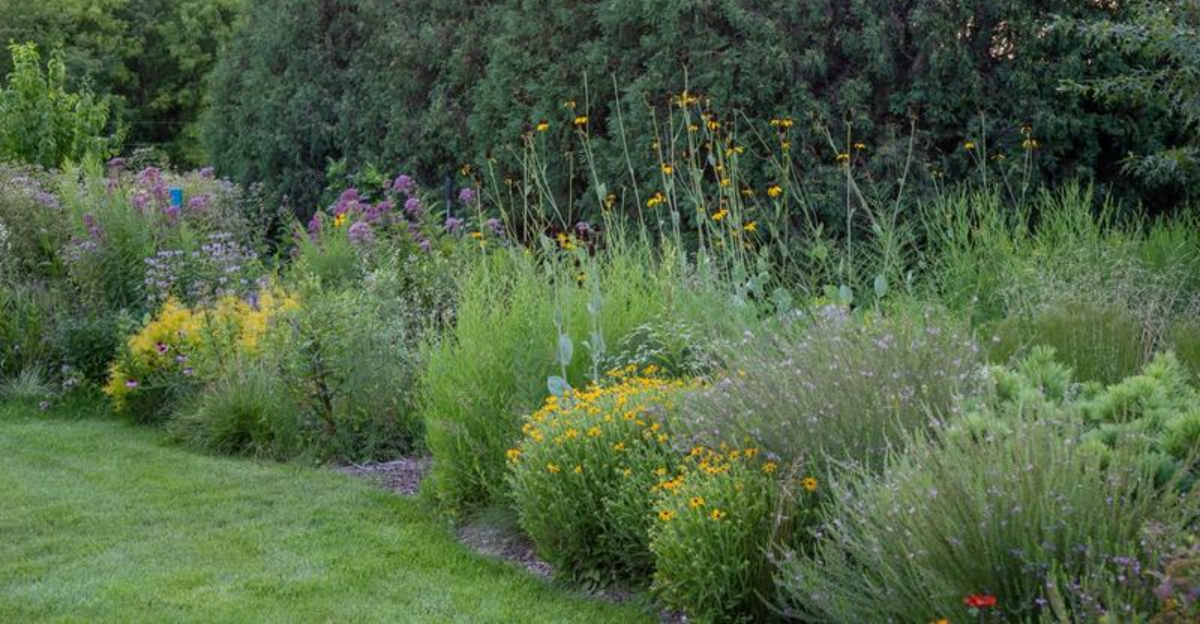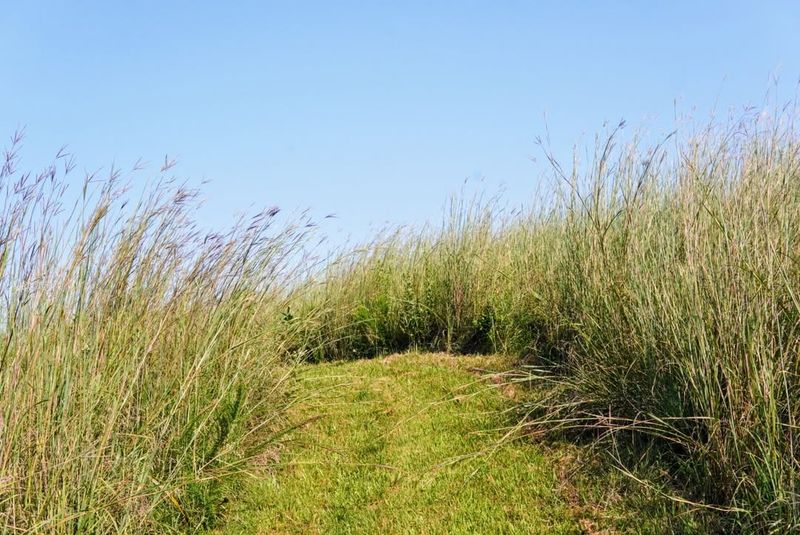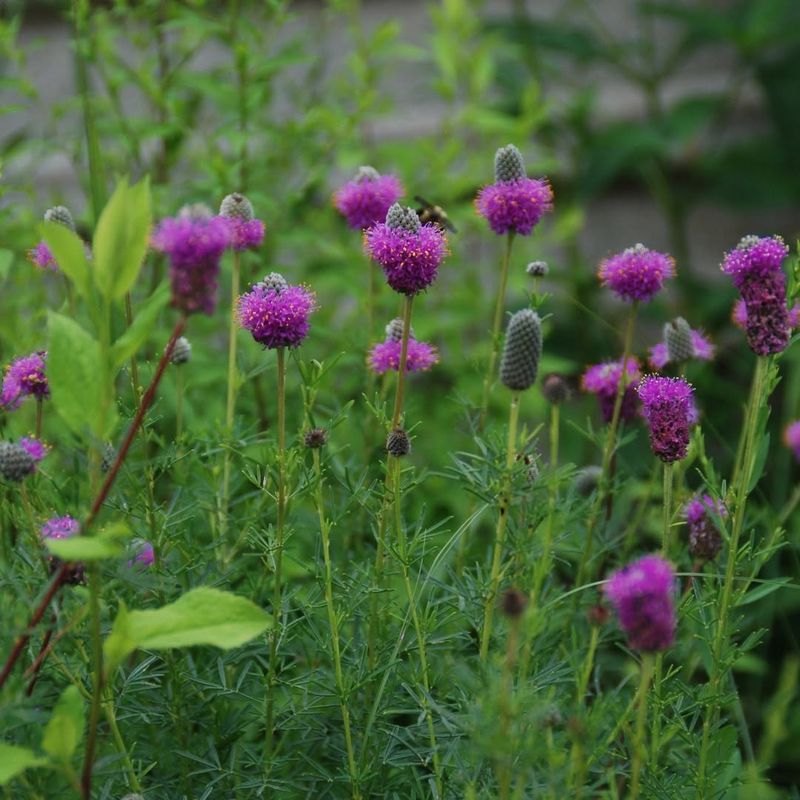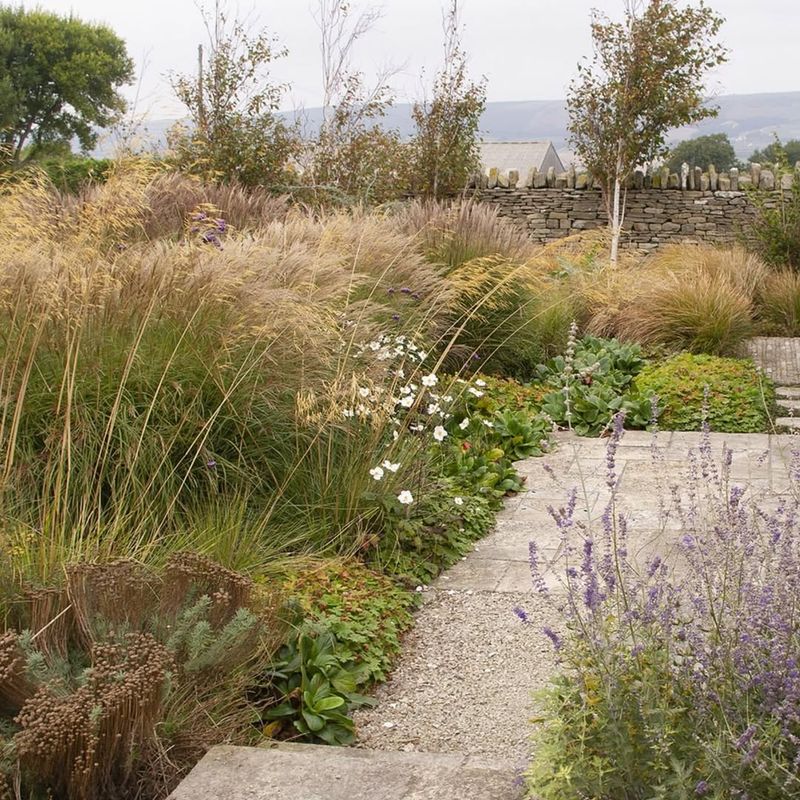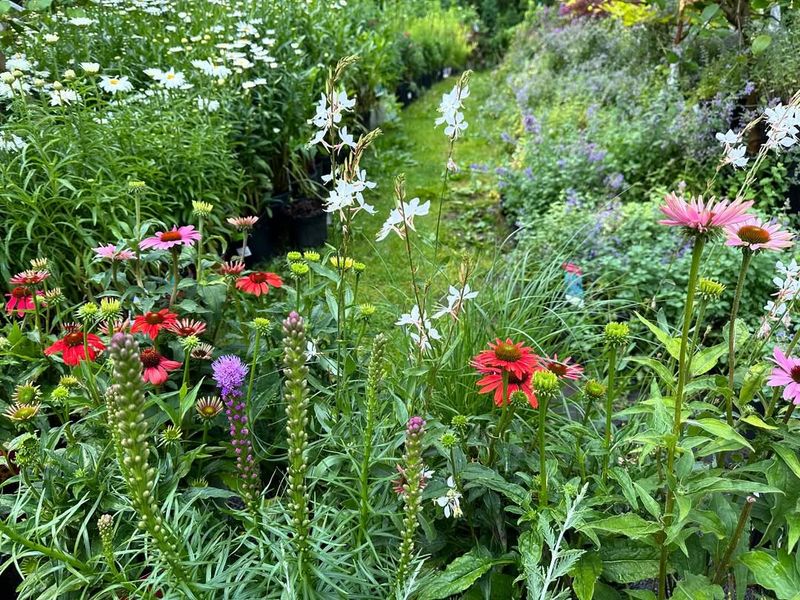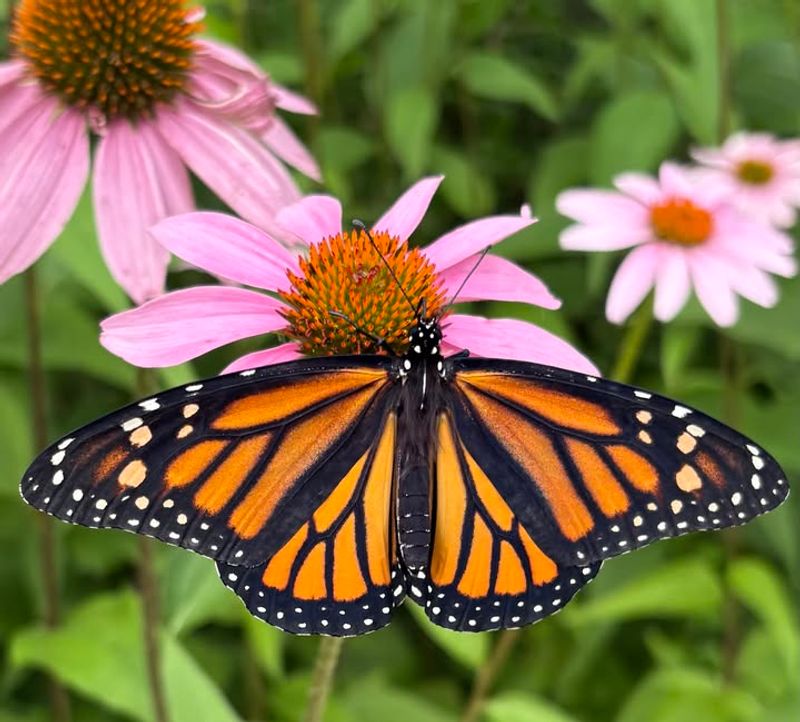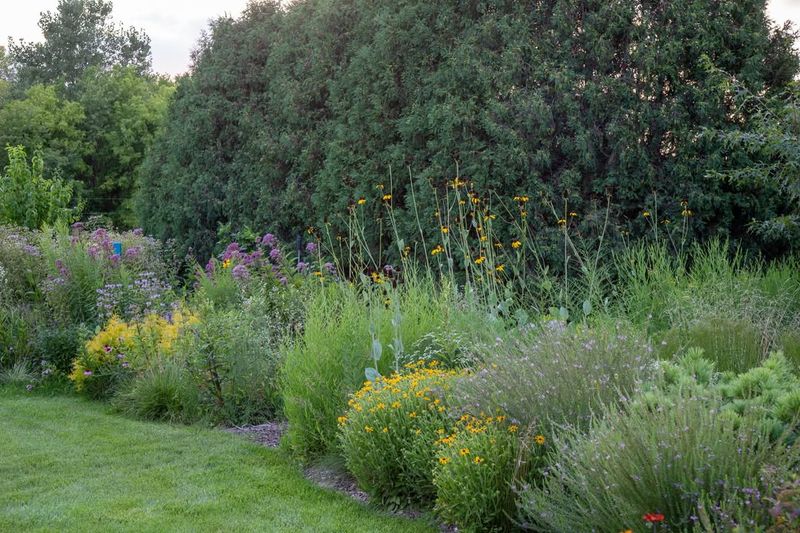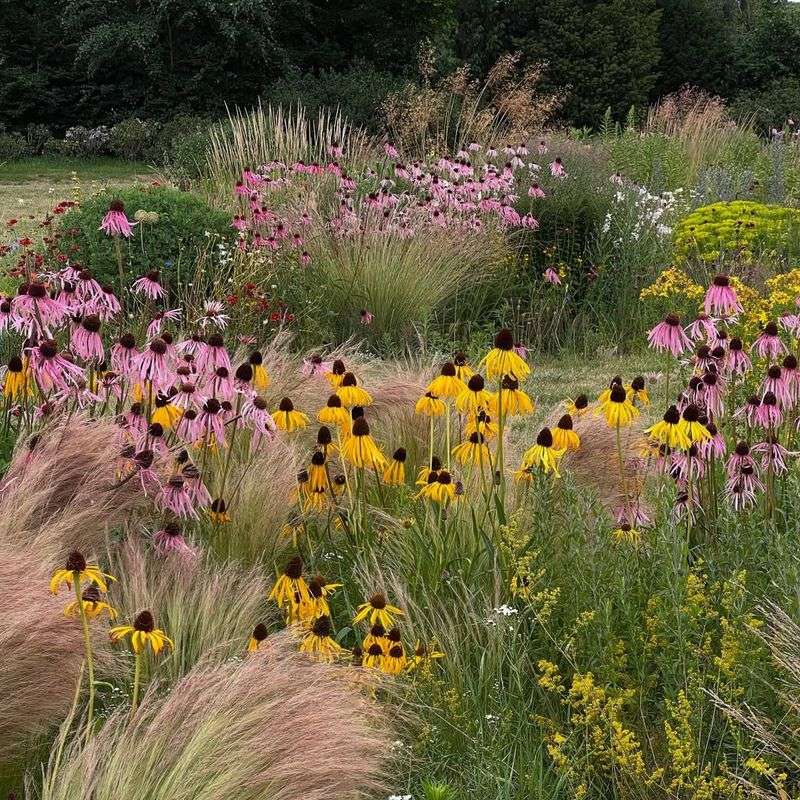Something big is happening in American gardens, and it’s not another short-lived fad built on exotic plants or high-maintenance lawn care.
Instead, the next major wave of landscape design comes straight from the heartland—where Kansas gardeners are blending native plants, natural movement, and modern simplicity into a style now known as prairie minimalism.
This new approach is beautiful, sustainable, and surprisingly easy to achieve. It doesn’t fight climate or soil.
It doesn’t require a garage full of tools or endless weekend upkeep. It looks wild and effortless, but it’s also deeply intentional.
And as more gardeners look for low-water, wildlife-friendly alternatives to traditional landscapes, prairie minimalism is poised to become the country’s next major outdoor design trend.
Native Grasses Take Center Stage
Imagine walking through a field where tall grasses sway gently in the breeze, creating waves of golden and green movement.
That peaceful scene is exactly what prairie minimalism brings to your backyard.
Kansas gardeners have discovered that native grasses like little bluestem, switchgrass, and prairie dropseed create stunning visual effects without needing constant attention.
These grasses evolved over thousands of years to thrive in the heartland climate.
They handle hot summers, cold winters, and everything in between without fertilizers or excessive watering.
Their deep root systems can reach several feet underground, making them incredibly drought-resistant.
Beyond their practical benefits, native grasses offer year-round interest.
Spring brings fresh green shoots, summer showcases their full height and texture, fall transforms them into shades of copper and burgundy, and winter reveals their architectural seed heads dusted with snow.
Birds love feasting on the seeds, and beneficial insects find shelter among the blades.
Starting a native grass garden is simpler than you might think and many Kansas nurseries now sell starter plugs that establish quickly.
Plant them in groups of odd numbers for a natural look, and give them space to spread and within two seasons, you will have a low-maintenance garden that looks professionally designed.
Fewer Plants, Greater Impact
Walk into any traditional garden and you might feel overwhelmed by the sheer number of different plants competing for attention.
Prairie minimalism takes the opposite approach, proving that less really can be more.
Kansas landscape designers are creating breathtaking spaces using just three to five plant species repeated throughout the garden.
This intentional simplicity creates a calming effect that makes your outdoor space feel like a natural retreat.
When you limit your plant palette, each species gets to shine without visual competition.
A mass planting of purple coneflowers, for example, creates a dramatic purple wave that a single specimen could never achieve.
Repetition also makes garden maintenance significantly easier, so you only need to learn the care requirements for a handful of plants instead of dozens.
Watering schedules become straightforward, and you can quickly spot problems when all your plants are the same species.
Kansas gardeners often choose plants with different bloom times to extend seasonal interest.
Early spring might feature pasque flowers, summer brings coneflowers and black-eyed Susans, and fall showcases goldenrod.
Each season has its star performer, but the overall design remains uncluttered and peaceful.
This approach works beautifully in small urban yards or sprawling rural properties alike.
Embracing Natural Shapes And Patterns
Forget perfectly manicured hedges and rigid geometric flower beds!
Prairie minimalism celebrates the organic, flowing shapes found in natural grassland ecosystems.
Kansas gardeners are ditching straight edges in favor of gentle curves and irregular borders that mimic how plants actually grow in the wild.
Natural patterns create gardens that feel relaxed and inviting rather than formal and stiff.
Curved pathways encourage exploration and make even small spaces feel larger.
Planting beds with wavy edges blend seamlessly into lawn areas or hardscaping, creating smooth transitions that please the eye.
Consider how prairie plants naturally group themselves in nature since they cluster in drifts and sweeps rather than evenly spaced rows.
Recreating this pattern means planting in loose, overlapping groups that look spontaneous even though they are carefully planned.
Leave some open ground between plant clusters to represent the natural bare spots found in prairies.
Kansas designers often use rocks and boulders as accent features, placing them where glaciers might have deposited them thousands of years ago.
These natural elements add structure without feeling formal.
The result is a garden that looks like it has always been there, a seamless extension of the surrounding landscape that requires minimal intervention to maintain its beauty.
Color Palettes Inspired By The Prairie
Step outside during different seasons in Kansas, and you will notice the prairie landscape shifts through a beautiful range of colors.
Prairie minimalism borrows this natural color progression, creating gardens that feel harmonious with their surroundings.
Spring starts with soft greens and pale purples, summer explodes with golden yellows and vibrant purples, and autumn brings warm russets and burnt oranges.
Limiting your color scheme to these natural tones creates a cohesive look that feels sophisticated and calming.
You will not find neon pink petunias or bright orange marigolds in prairie minimalist gardens.
Instead, gardeners choose plants with subtle, earthy colors that blend rather than clash.
Kansas favorites include the purple-blue of wild indigo, the sunny yellow of black-eyed Susans, and the soft pink of prairie smoke.
These colors work together because they already do in nature.
Adding silver-gray foliage plants like artemisia or sage provides contrast without introducing jarring colors.
Even hardscaping materials follow this natural palette.
Pathways use tan gravel or weathered wood mulch instead of bright white stones.
Decorative elements stick to rusty metal, natural wood, or stone in earth tones.
The result is a garden where every element supports the overall vision of bringing the peaceful prairie aesthetic home.
Water-Wise Gardening Principles
Kansas knows drought and the state’s gardeners have become experts at creating beautiful landscapes that thrive with minimal water.
Prairie minimalism embraces this practical necessity and turns it into an environmental advantage.
By choosing plants adapted to the region’s rainfall patterns, gardeners can dramatically reduce or even eliminate supplemental watering.
Native prairie plants developed incredible survival strategies over millennia.
Their extensive root systems access moisture deep underground that shallow-rooted plants cannot reach.
Many species have small or waxy leaves that reduce water loss through evaporation.
Some even go dormant during the hottest part of summer, conserving energy until conditions improve.
Grouping plants with similar water needs together makes irrigation more efficient.
Place thirstier species near downspouts or in naturally low spots where water collects.
Position drought-tolerant plants in hot, dry areas where nothing else would survive.
This strategic placement means you are working with your site’s natural conditions instead of fighting them.
Mulching plays a crucial role in water conservation.
A three-inch layer of organic mulch around plants keeps soil cooler, reduces evaporation, and suppresses weeds that compete for moisture.
Kansas gardeners often use locally sourced wood chips or shredded leaves, which break down over time to improve soil quality while protecting precious water resources.
Creating Wildlife Habitat
Something magical happens when you plant a prairie garden and within weeks, butterflies appear, birds start visiting, and beneficial insects move in and set up shop.
Kansas gardeners are discovering that prairie minimalism does not just create beautiful spaces for people; it provides essential habitat for wildlife that has lost much of its natural home.
Native plants have co-evolved with local wildlife over thousands of years, forming partnerships that non-native ornamentals cannot replicate.
Monarch butterflies specifically need milkweed plants to lay their eggs and feed their caterpillars.
Native bees prefer native flowers because their body shapes match the flower structures perfectly.
Goldfinches wait for coneflower seeds to ripen before raising their babies.
A prairie minimalist garden becomes a miniature ecosystem supporting dozens of species.
Leaving seed heads standing through winter provides food when other sources are scarce.
Dense grass clumps offer nesting sites and shelter from predators.
Even the bare ground between plants serves a purpose, giving ground-nesting bees places to dig their tunnels.
Kansas homeowners report increased bird activity, more butterflies, and fewer pest problems once their prairie gardens mature.
Natural predators like ladybugs and lacewings control aphids without chemicals.
The garden becomes self-regulating, requiring less intervention while providing more enjoyment and connection to nature right outside your door.
Low-Maintenance Garden Freedom
Most people love the idea of a beautiful garden but dread the endless hours of weeding, watering, and fussing required to keep traditional landscapes looking good.
Prairie minimalism offers an appealing alternative and once established, these gardens practically take care of themselves, giving you more time to actually enjoy your outdoor space.
Native prairie plants are survivors and they do not need fertilizers because they adapted to nutrient-poor soils.
They resist local pests and diseases without chemical treatments and their deep roots mean you can skip watering during most of the growing season.
Kansas gardeners often spend less than an hour per month maintaining established prairie gardens.
Annual maintenance typically involves just one major task: cutting back withered growth in early spring before new shoots emerge.
Some gardeners use string trimmers, others prefer hand pruners, and a few even conduct controlled burns on larger properties.
That single spring cleanup prepares the garden for another season of effortless beauty.
Compare this to traditional perennial borders requiring regular deadheading, dividing, staking, and replanting or high-maintenance lawns demanding weekly mowing, frequent watering, and seasonal fertilizing.
Prairie minimalism eliminates most of these chores!
The time you save can be spent relaxing in your hammock, watching butterflies dance among the flowers, and actually living in your garden rather than constantly working in it.
Year-Round Visual Interest
Traditional gardens often look fantastic for a few weeks in summer, then fade into boring green blobs or bare dirt for the rest of the year.
Prairie minimalism solves this problem by designing with all four seasons in mind and Kansas gardeners are proving that your outdoor space can look stunning every single month, from January snowfalls to December frosts.
Spring brings the first green shoots pushing through last year’s golden stems, creating beautiful color contrasts.
Early bloomers like pasque flowers and wild hyacinths add pops of purple and blue.
As temperatures warm, grasses unfurl fresh blades that catch morning dew and sparkle in sunlight.
Summer is obviously spectacular, with waves of flowering plants attracting pollinators and filling the air with gentle movement.
But fall might be even more impressive because grasses transform into shades of copper, burgundy, and gold.
Seed heads develop interesting textures and shapes and everything glows in the low-angle fall sunlight.
Winter reveals the architectural bones of your garden and frost outlines each blade of grass and seed head with crystalline beauty.
Snow collects on plant structures, creating natural sculptures and birds visit daily to feast on seeds and even dormant, the garden remains visually engaging and full of life.
Kansas gardeners often say winter is when they appreciate their prairie gardens most, when other landscapes look depressing!

